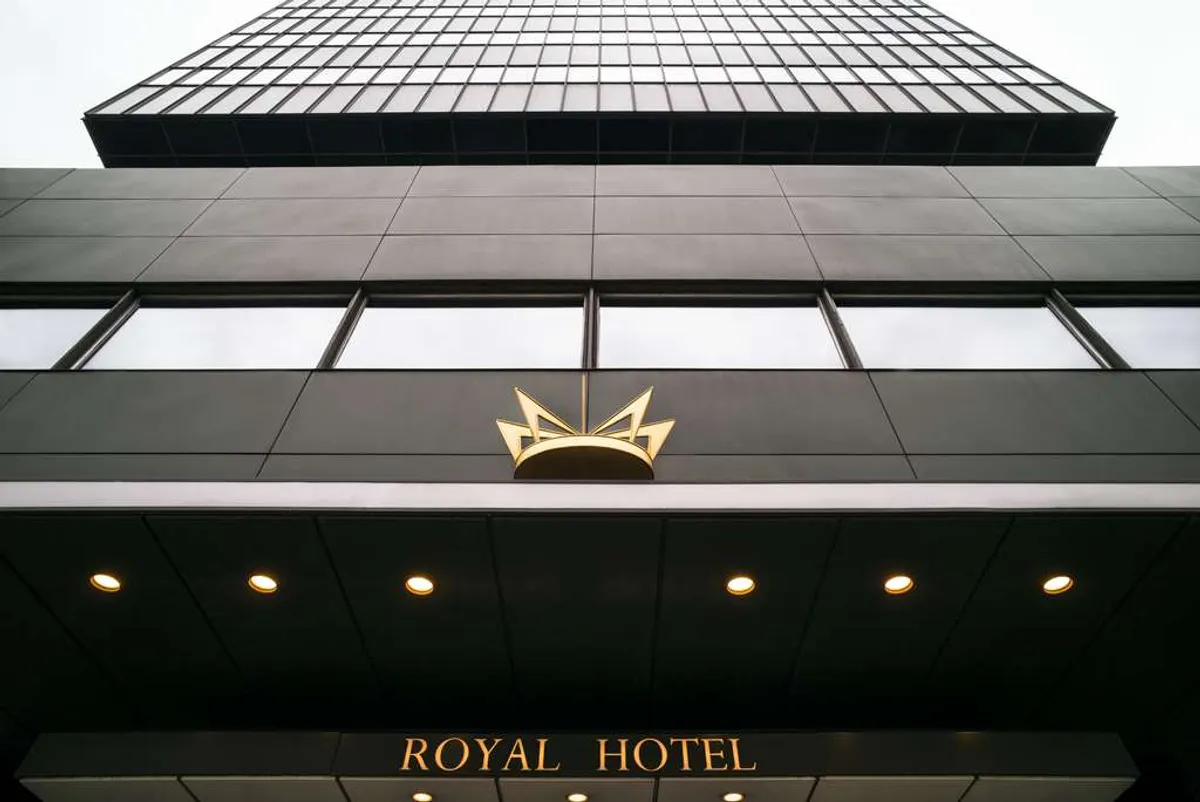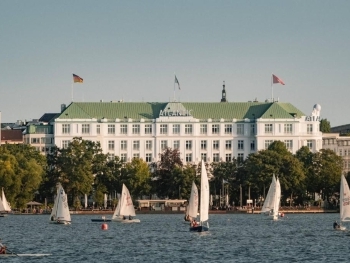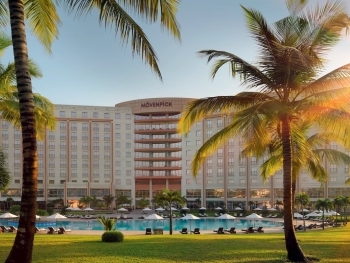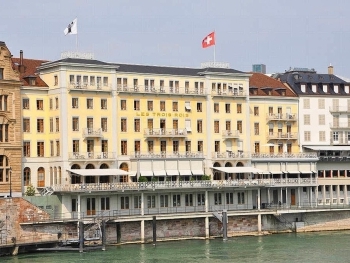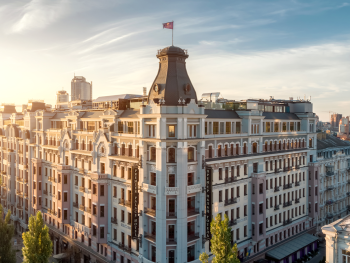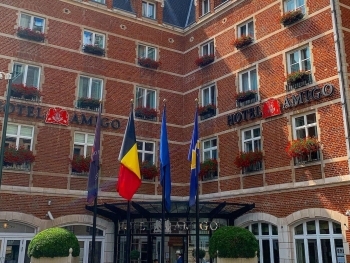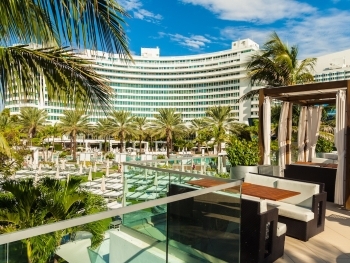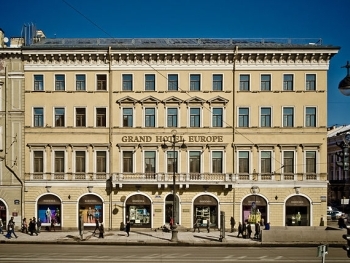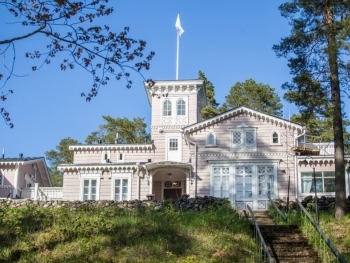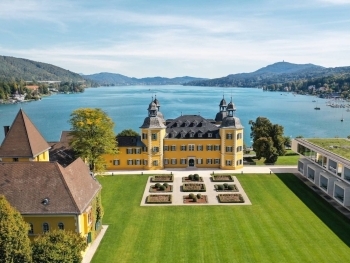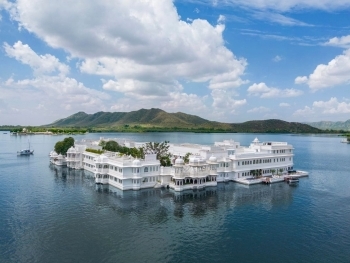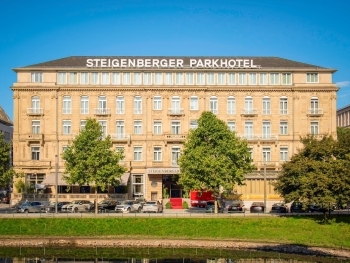The Royal Hotel, now known as the Radisson Collection Royal Hotel, Copenhagen, stands as a beacon of Danish modernist design and a symbol of Copenhagen's architectural heritage. Designed by the legendary architect Arne Jacobsen, the hotel is celebrated not just for its aesthetic appeal but also for its pioneering design principles that have influenced generations of architects and designers.
Historical Background
The Royal Hotel was commissioned by Scandinavian Airlines System (SAS) in the mid-20th century as part of a broader vision to establish a global network of luxury hotels. SAS aimed to create a landmark that would encapsulate the spirit of modern travel and the Scandinavian aesthetic. Arne Jacobsen, a leading figure in Danish design, was chosen to bring this vision to life.
Construction began in 1956, and the hotel opened its doors to guests in 1960. At the time of its completion, it was the tallest building in Copenhagen, standing at 70 meters with 22 floors. This feat of engineering was not just a milestone for Danish architecture but also a statement of the country’s post-war optimism and forward-looking ambition.
Architectural Design
Exterior
The exterior of the Royal Hotel is characterized by its sleek, modernist façade. The building’s rectangular form, clad in green-tinted glass and aluminum, exemplifies Jacobsen’s minimalist aesthetic. The use of curtain wall construction was revolutionary at the time and gave the building a distinctively clean and uncluttered look. This approach allowed for large, uninterrupted panes of glass, which not only provided stunning views of the city but also flooded the interiors with natural light.
Interior
Jacobsen's design philosophy extended seamlessly from the exterior to the interior. He was involved in every aspect of the hotel’s design, from the structural elements to the smallest details of furniture and fittings. This holistic approach ensured a cohesive and harmonious environment throughout the building.
One of the most iconic elements of the hotel's interior is the spiral staircase in the lobby, which showcases Jacobsen's love for organic forms and his ability to blend functionality with beauty. The staircase is not only a functional element but also a sculptural centerpiece that captures the essence of mid-century modern design.
Furnishings and Fixtures
Jacobsen's influence is perhaps most evident in the custom-designed furnishings and fixtures. Many pieces created for the Royal Hotel have become design classics, admired and replicated worldwide.
The Egg and the Swan Chairs
Among the most famous of these are the Egg and Swan chairs. These chairs were designed specifically for the Royal Hotel and have since become icons of modern furniture design. The Egg chair, with its curved, enveloping form, provides a sense of privacy and comfort in public spaces, while the Swan chair, with its graceful lines, epitomizes the elegance of Scandinavian design.
Other Notable Designs
In addition to these, Jacobsen designed the Drop chair and the Series 3300 chairs for the hotel. Each piece of furniture was meticulously crafted to complement the overall design of the hotel, reflecting Jacobsen’s belief in the integration of architecture and design.
The Hotel's Evolution
Renovations and Modernization
Over the decades, the Royal Hotel has undergone several renovations to meet the changing demands of the hospitality industry while preserving its historical and architectural integrity. The most significant renovation took place in 2000 when the hotel was rebranded as the Radisson SAS Royal Hotel. This renovation aimed to update the facilities and services without compromising the original design ethos.
In 2018, the hotel was again rebranded, this time as the Radisson Collection Royal Hotel, Copenhagen. This rebranding marked a new chapter in the hotel's history, emphasizing its status as a luxury hotel that blends historical significance with contemporary comfort.
Preservation Efforts
Efforts have been made to preserve key elements of Jacobsen’s design. Room 606, for example, has been meticulously maintained in its original condition, serving as a living museum of Jacobsen’s work. This room offers guests a unique opportunity to experience the hotel as it was envisioned by the architect, complete with original furnishings and fittings.
The Hotel Today
Today, the Radisson Collection Royal Hotel continues to be a premier destination for travelers visiting Copenhagen. It offers a range of luxury amenities, including a fitness center, a gourmet restaurant, and state-of-the-art conference facilities. Despite these modern additions, the hotel remains true to Jacobsen’s vision, with design elements that pay homage to its rich heritage.
The hotel’s restaurant, Café Royal, serves as a culinary destination in its own right, offering a menu that blends classic Danish dishes with contemporary international cuisine. The hotel’s bar, located in the elegant lobby, provides a stylish setting for guests to unwind and enjoy a cocktail.
Cultural and Architectural Impact
The Royal Hotel’s impact extends beyond its physical presence. It has played a significant role in promoting Danish design and architecture on the global stage. Jacobsen’s work on the hotel has inspired countless designers and architects, contributing to the global appreciation of mid-century modernism.
The hotel is frequently featured in architectural tours and design publications, drawing enthusiasts from around the world. Its status as a design landmark has made it an integral part of Copenhagen’s cultural and architectural landscape.
The Royal Hotel, Copenhagen, stands as a testament to Arne Jacobsen’s visionary design and the enduring appeal of mid-century modern architecture. From its groundbreaking construction to its meticulously preserved interiors, the hotel embodies the spirit of Danish design and continues to inspire and captivate visitors from around the world. As it evolves to meet the needs of contemporary travelers, the Royal Hotel remains a shining example of how thoughtful design can create spaces that are both functional and beautiful, leaving a lasting legacy for future generations.
